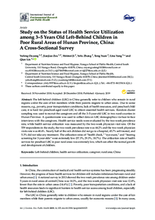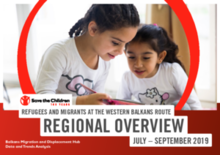Displaying 361 - 370 of 836
The increase in the arrival of unaccompanied minors to Europe rises as a new challenge for the local authorities responsible for the reception. The comparison of two cross-border regions shows the possibility of transferring successful practices between European states.
This series of videos highlights Save the Children's work in Honduras, El Salvador and Mexico to protect migrant and returnee children.
The objective of this study was to test the associations between parent-child separation with telomere length (TL) and psychopathology during adolescence.
This study aimed to explore school bullying in LBC and examine the effectiveness of art therapy intervention for reducing bullying victimization affecting LBC in rural areas of China.
As increasing numbers of Unaccompanied Refugee Minors (URM) are arriving in Europe, there is a need to investigate which factors promote psychological resilience and improve their mental health. This review aims to identify preventive post settlement influences, including living arrangements, access to mental health services and effective treatments that may improve mental health outcomes.
This paper outlines a psychological skills group for unaccompanied asylum-seeking young people with a focus on cultural adaptations in the context of a UK mental health service.
Outlining developments with reference to relevant studies, this review characterizes the perspectives used to explore and understand the phenomenon of children being left behind in rural China by parents going to work in cities.
This study evaluated the health service needs of left-behind children ages 3-5 years old in Hunan Province, China.
The aims of this study were to systematically evaluate and comparatively analyse the mental health status of left‐behind children (LBC) in China and to provide a scientific basis for mental intervention and healthy education for LBC.
Data and Trend Analysis (DATA) Refugees and Migrants at the Western Balkans Route Regional Overview, covering period July - September 2019, describes key trends in migrations in the region, detailing information about the number of people on the move, demography (age, sex, country of origin, etc), behavioral patterns, and routes in use - with a focus on children, particularly unaccompanied children.


